Sportswear Market Survey

Use this free sportwear market survey form template to conduct market research. It gathers answers to most questions that are important to assess the market performance of a sportswear brand. Deploy this form on your website or social media and start collecting responses now.
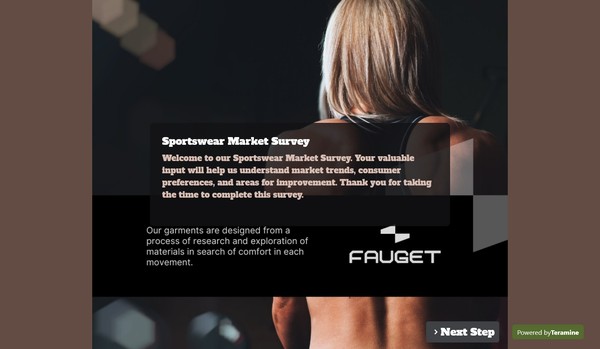
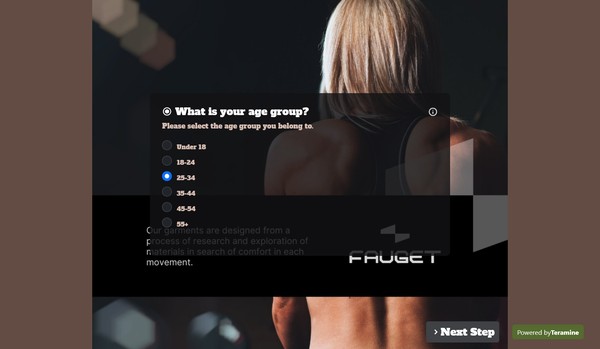
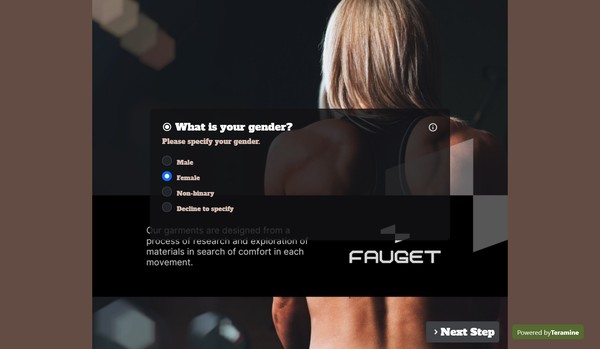
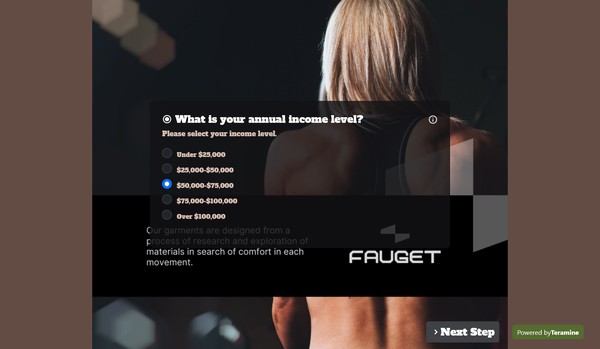
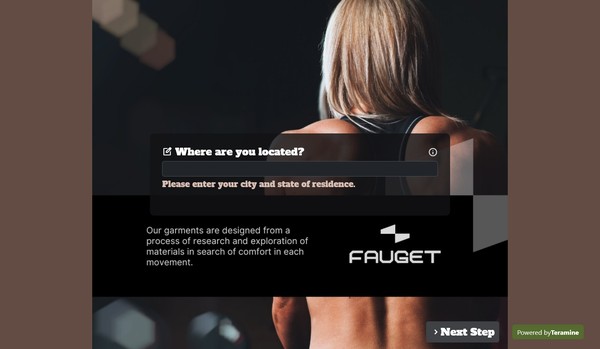
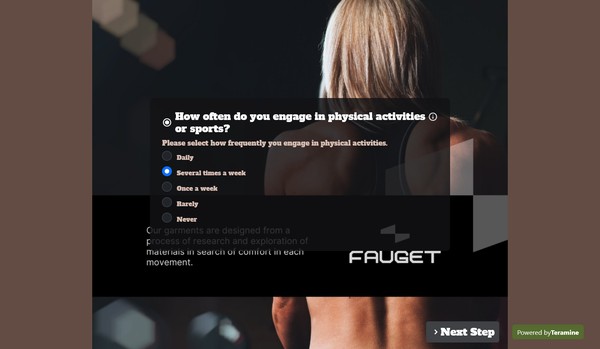
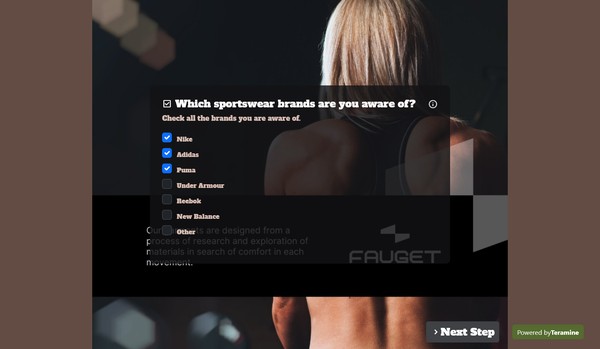
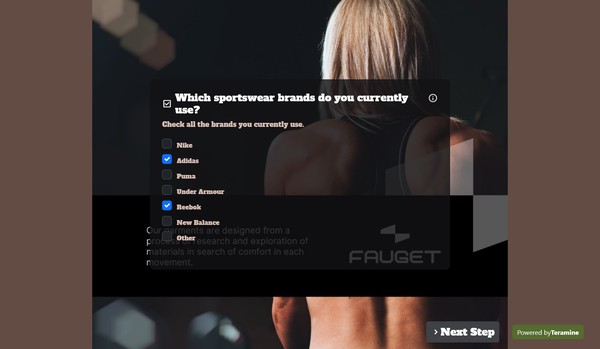
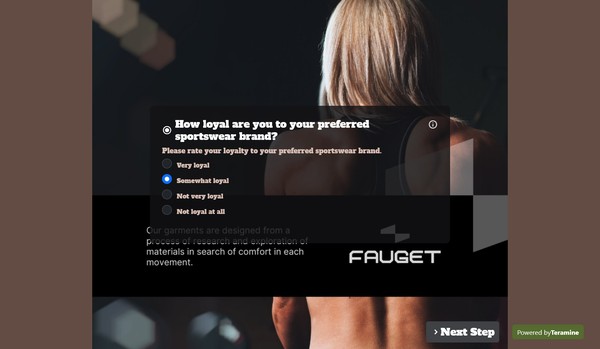
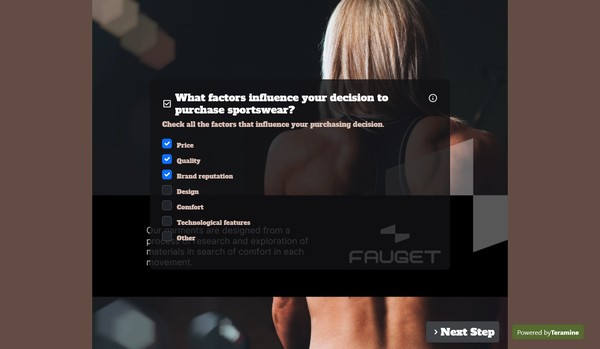
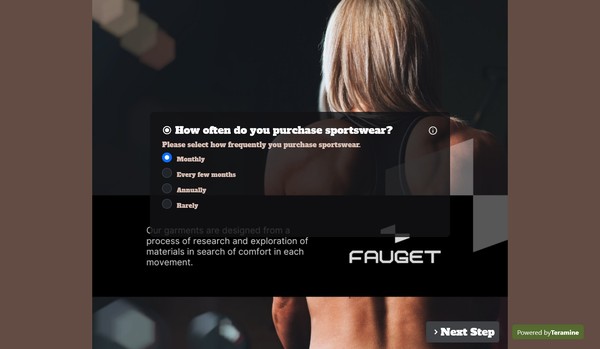
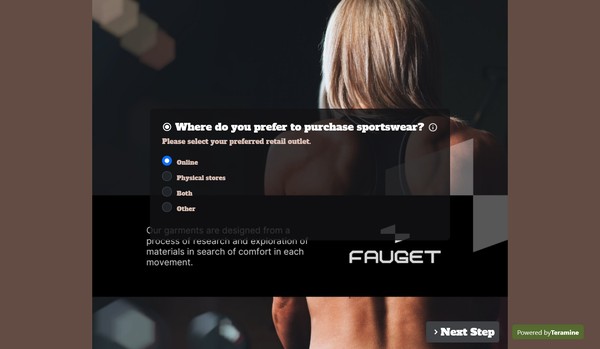
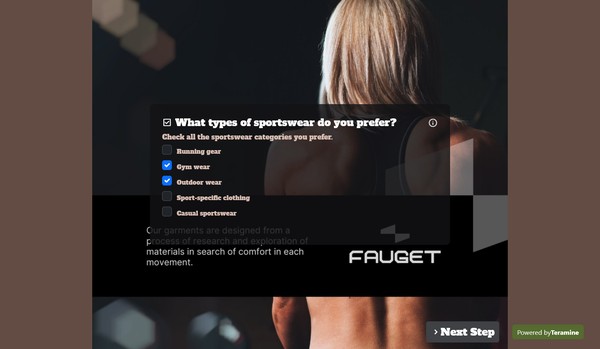

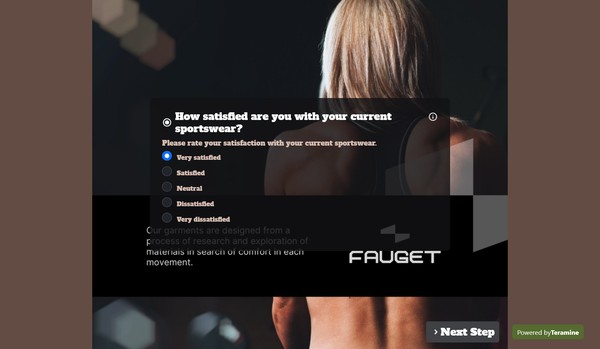
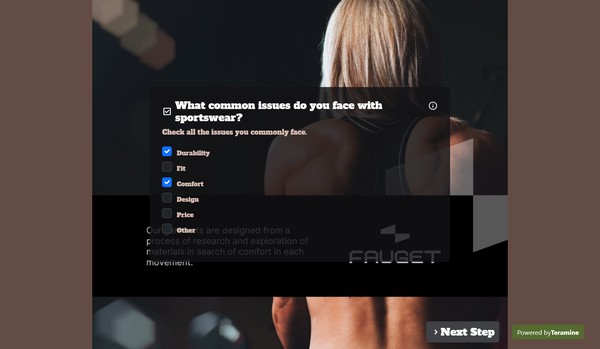
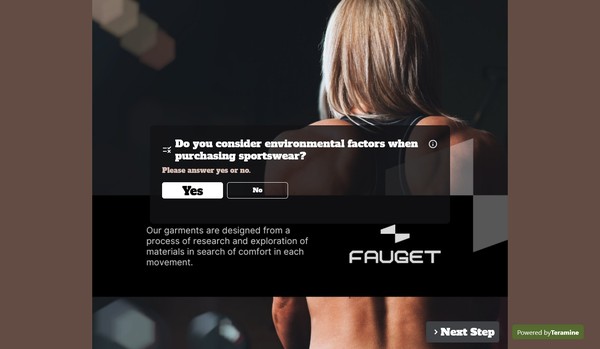
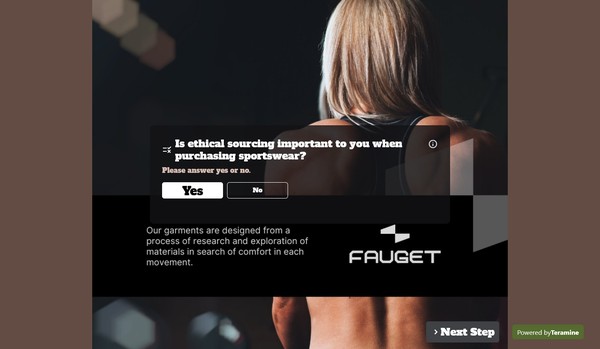
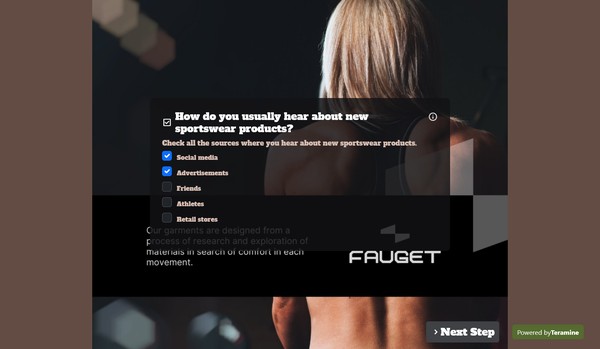
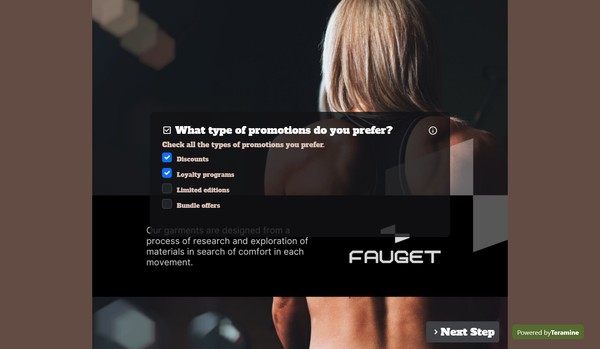
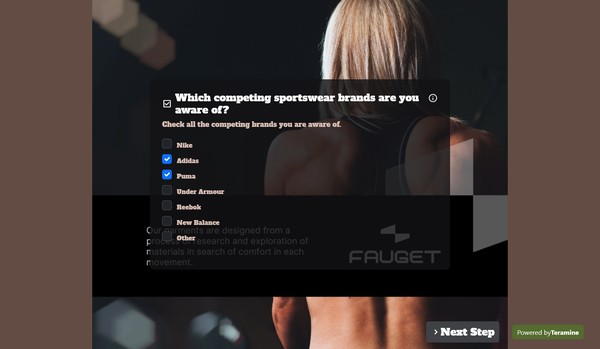
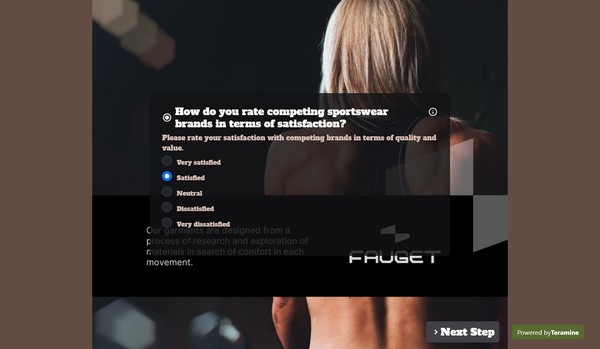
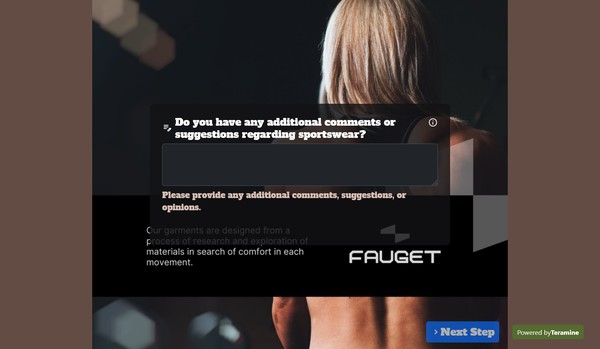
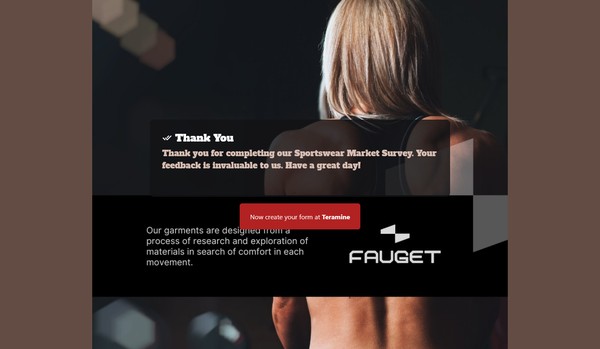
Sportswear Market Survey FAQs
A Sportswear Market Survey is a methodical study conducted to gather and analyze data regarding consumer preferences, market trends, and competitive dynamics within the sportswear industry. This survey aims to understand various factors that influence consumer behavior, purchasing decisions, and brand loyalty in the sportswear category.
Key components of a Sportswear Market Survey typically include:
Consumer Demographics: Understanding the age, gender, income level, and lifestyle of target consumers to tailor products effectively.
Preferences and Trends: Identifying popular styles, materials, and functionalities that consumers favor in sportswear, including performance requirements and aesthetic tastes.
Brand Awareness and Perception: Evaluating consumer recognition of brands, perceptions of quality, pricing, and overall brand loyalty.
Purchasing Behavior: Analyzing where consumers shop for sportswear (online vs. offline), the frequency of purchases, and the factors that influence buying decisions, such as promotions and advertising.
Market Size and Growth Potential: Estimating the current market size and projecting future growth based on consumer behavior and emerging trends.
Competitive Analysis: Assessing the market positioning of key players within the industry, including their strengths, weaknesses, market share, and strategies.
Consumer Feedback: Collecting qualitative insights on customer satisfaction and the performance of existing products to inform future product development.
Conducting a Sportswear Market Survey provides valuable insights that can guide strategic decisions, marketing initiatives, product innovation, and overall business growth within the sportswear sector.
A Sportswear Market Survey should be comprehensive and strategically structured to gather valuable insights into market dynamics, consumer preferences, and competitive positioning. Here are key components to include in the survey:
Introduction
- Purpose of the survey
- Confidentiality assurance
- Estimated time for completion
Demographic Information
- Age range
- Gender
- Geographic location
- Income level
- Education level
- Occupation
Consumer Behavior
- Frequency of purchasing sportswear
- Typical spending range on sportswear products
- Types of sports activities engaged in (e.g., running, gym, team sports)
- Preferred brands and why
- Factors influencing purchase decisions (e.g., price, quality, brand reputation, sustainability)
Product Preferences
- Types of sportswear purchased (e.g., athletic shoes, clothing, accessories)
- Preferred materials and features (e.g., moisture-wicking, eco-friendly materials)
- Importance of style versus functionality
Brand Perception
- Familiarity with leading sportswear brands
- Brand loyalty assessments
- Brand image and reputation perceptions
- Positioning of competitors in the market
Marketing Channels
- Awareness of recent marketing campaigns (social media, influencer partnerships, traditional advertising)
- Preferred channels for discovering new sportswear products (e.g., online, physical stores, social media)
- Impact of promotions and discounts on purchasing behavior
Trends and Insights
- Opinion on current and emerging trends in sportswear (sustainability, athleisure, technology integration)
- Interest in personalized or custom sportswear options
- Feedback on shopping experiences (in-store versus online)
Challenges and Pain Points
- Common frustrations encountered when purchasing sportswear
- Barriers to purchasing specific brands or products
- Suggestions for improvements in product offerings or shopping experiences
Future Outlook
- Anticipated changes in sportswear consumption (post-pandemic behavior, financial outlook)
- Interest in new product categories or collaborations
- Expectations for brand engagement and innovation
Closing Section
- Open-ended feedback for additional comments or recommendations
- Thank you note for participation
- Option to sign up for future communications or surveys
- Data Analysis Plan
- Outline the methodology for analyzing collected data
- Possible segmentation analysis to tailor marketing strategies based on consumer demographics and preferences
- Ethical Considerations
- Clear guidelines on data usage
- Compliance with privacy regulations (e.g., GDPR)
Incorporating these elements will help provide a thorough understanding of the sportswear market, facilitating informed decision-making for marketing strategies, product development, and brand positioning.
Utilizing a sportswear market survey can provide significant advantages for your business strategy and decision-making processes. Here are several compelling reasons to consider:
Understanding Consumer Preferences: A sportswear market survey helps gather insights into consumer preferences, including styles, colors, and designs that resonate with your target demographic. This information is invaluable for tailoring your product offerings to meet market demands.
Identifying Trends: The sportswear industry is dynamic, with trends continually evolving. Surveys can help track emerging trends and consumer behavioral shifts, allowing your business to stay ahead of the curve and adapt your marketing strategies accordingly.
Competitive Analysis: By surveying consumers, you can gain insights into how your brand compares to competitors. Understanding perceptions of your brand versus others can inform your positioning and help identify areas for improvement.
Target Market Segmentation: Surveys can assist in identifying different segments within the market, allowing you to refine your targeting and marketing efforts. A well-segmented approach can enhance engagement and conversion rates by addressing the specific needs of various consumer groups.
Product Development: Insights from market surveys can guide your product development process. Understanding what features, fabrics, and functionalities consumers are looking for can inform your design and production efforts, leading to more successful product launches.
Pricing Strategies: Market surveys can provide critical information regarding customers’ perceived value and willingness to pay. This data allows you to optimize pricing strategies, ensuring that your offerings are positioned appropriately in relation to competitors while still appealing to consumers.
Brand Loyalty and Customer Retention: By gauging customer satisfaction and loyalty through surveys, you can identify areas for enhancement in product quality and customer service, ultimately leading to improved retention rates.
Data-Driven Decision Making: Using data derived from surveys allows for informed decision-making rather than relying on assumptions. This evidence-based approach reduces risk and enhances the likelihood of successful strategies.
In summary, a sportswear market survey is an essential tool to gain a comprehensive understanding of your market landscape. By leveraging this data, you can make strategic decisions that enhance competitiveness and drive business growth.
Yes. We take the security of your data very seriously. We have built our application in compliance with the latest security standards. Your data is locked down with access allowed only after strict security checks. In addition, we use the latest SSL encryption standards to protect your data in transit from our servers to your device. You can also protect your forms by using our captcha widgets to prevent spam.'






















